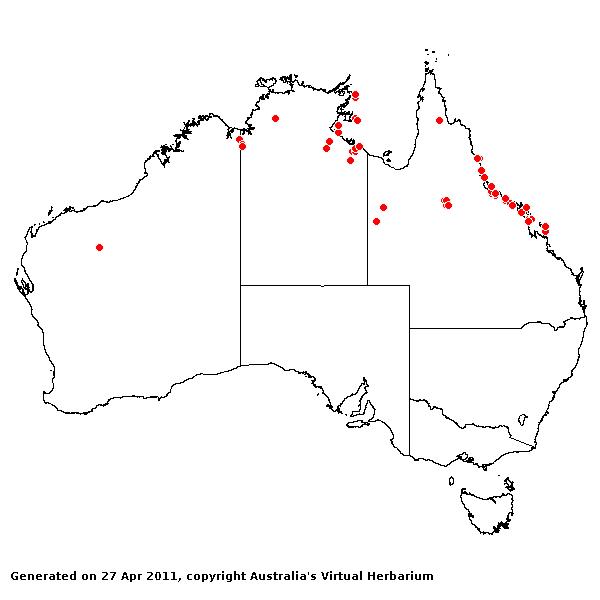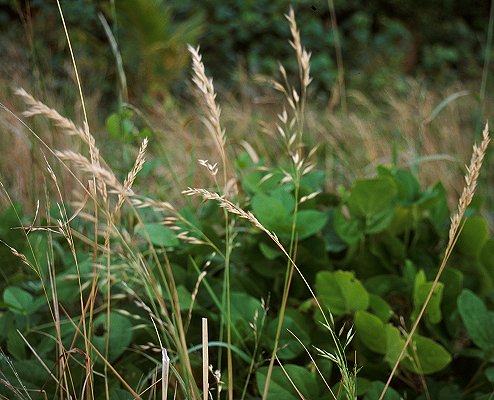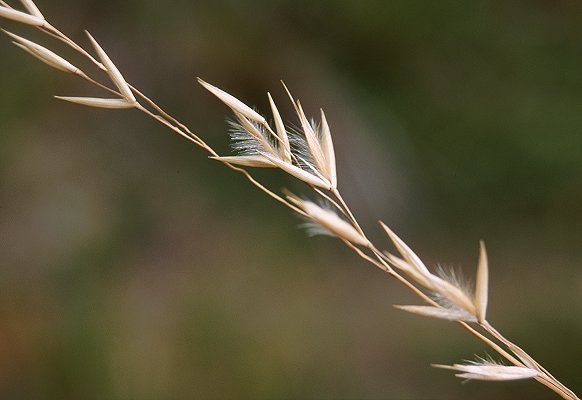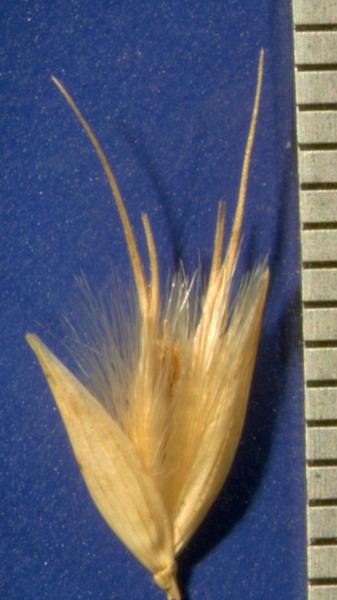Eriachne triodioides Domin. Biblioth.
Bot. 85: 356 (1915).
Classification. (GPWG 2001) : Subfamily
Micrairoideae. Eriachneae.
Type of Basionym or
Protologue Information: Australia, Russell R.: Domin (PR holo).
Key references
(books and floras): [2002] D.Sharp & B.K.Simon, AusGrass, Grasses of
Australia.
Habit.
Perennial. Culms erect, stature robust to moderate, 75–120 cm tall. Mid-culm
nodes glabrous or pubescent or bearded. Lateral branches simple or branched.
Ligule a fringe of hairs. Leaf-blades straight or curled, convolute, 10–40 cm
long, 2–90 mm wide. Leaf-blade surface smooth or scabrous, glabrous.
Inflorescence.
Inflorescence compound, a panicle. Panicle elliptic, 8–15 cm long, 1.5–6 cm
wide.
Spikelets.
Spikelets pedicelled. Fertile spikelets 2-flowered, both fertile, comprising 2
fertile floret(s), without rachilla extension, ovate, laterally compressed,
9–10 mm long.
Glumes.
Glumes similar, thinner than fertile lemma. Lower glume ovate, membranous,
without keels, 9–11 -nerved. Lower glume surface glabrous or indumented. Upper
glume ovate, 7–10.5 mm long, membranous, without keels, 9–11 -nerved. Upper
glume surface smooth, glabrous or indumented.
Florets.
Fertile lemma 7–9 mm long, without keel, 5–7 -nerved. Lemma surface indumented.
Lemma apex awned, 1 -awned. Median (principal) awn 2–13 mm long overall. Palea
apex dentate, awned (2). Anthers 3. Grain 2.8–3.8 mm long.
Continental
Distribution: Australasia.
Australian
Distribution: Western Australia, Northern Territory, Queensland.
Western Australia:
Gardner. Northern Territory: Darwin & Gulf. Queensland:
Burke, North Kennedy, Port Curtis, South Kennedy, Cook, Gregory North.
Notes.
Plants of this species are robust, tussocky mostly glabrous perennials, with
pubescent base, large spikelets, flattened caryopsis, and cartilaginous lemma
and palea concealed by a hirsute indumentum. Also, the lemma is bisulcate,
awned, and hairy on the nerves near apex on the inner surface, and the palea is
bifid. The glumes may be variously hairy or glabrous. There are close
similarities between E. triodioides and E. nervosa, though they
differ markedly in their ecological preferences for deep sands (E.
triodioides) and cracking clay soils (E. nervosa).
Endemic.
N of 22ºS in Qld, N.T., and extending slightly into W.A., commonly on islands
and coastal mainland. A plant chiefly of coastal sand dunes and deep, sandy
inland soils. Flowers and fruits July-Oct. (mid-winter to mid-spring), also
Mar.-Apr. (autumn).








